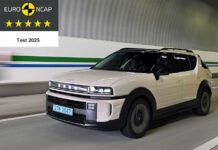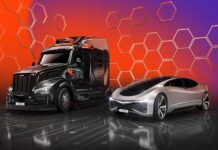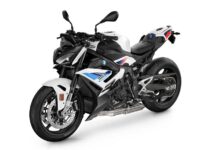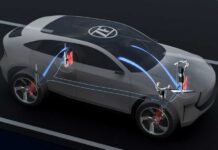
From infotainment systems and voice assistants to ADAS and smart parking, today’s vehicles are more connected and intelligent than ever—thanks to powerful, behind-the-scenes storage technology. In a recent listicle, Prasad Sandireddy, Vice President of Product Development Engineering at SanDisk, outlines the Top 7 In-Car Experiences That Depend on Storage, emphasizing how embedded flash solutions play a vital role in ensuring reliability, safety, and personalisation in connected and autonomous vehicles.
Features we now consider standard—rear cameras, parking sensors, and seamless infotainment—rely on sophisticated hardware and software working in harmony. At the heart of this system lies flash storage, silently powering these complex functions. As automotive design shifts toward digital cockpits with tablet-like displays, advanced embedded storage becomes essential to delivering smooth, responsive, and intelligent in-car experiences.
Bespoke Infotainment: Music, Maps and More
The perfect playlist makes a world of difference to your driving experience. Today’s advanced car infotainment systems use data, analytics, and AI tools to study users’ behavior patterns and offer highly personalized experiences to users, including personalized playlists.
Universal Flash Storage (UFS) solutions offer robust and reliable edge storage to support data demands of not just of cutting-edge infotainment solutions but also Advanced Driver Assistance Systems (ADAS) features such as navigation, HD mapping, and V2V/V2I (Vehicle -to-Vehicle/Vehicle-to-Infrastructure) communication.
This enables your car to deliver an infotainment experience as familiar as your living room stereo system, but smarter.
Superior Reliability: Meet Your Virtual Co-pilot
Reliability is paramount. Users actively evaluate safety features in a car before making a purchase. It could be an ADAS system that controls the steering wheel and keeps you within the lane or applies the brake when needed. Such tasks are handled by storage solutions that access, and cross-reference data stored from cameras, radars, and sensors in real-time. Modern automotive-grade solid-state drives (SSDs) and UFS modules offer high-speed, reliable, and simultaneous read/write performance, critical for these split-second decisions.
Voice Activated Assistance
Modern gadgets no longer depend solely on touch for prompts, and cars are no exception. For instance, you just need to say “Turn on the AC” or “Play my road trip playlist” to enable your car is all set to give you comfort without taking your hands off the steering wheel. The swiftness at which this command is executed depends on complex voice models securely stored and continuously refined in the vehicle’s memory.
Every voice profile, command history, and routine is cached in storage systems that help protect your privacy while speeding up recognition times. Over time, the vehicle “learns” your accent, phrasing, and unique requests, making your driver assist feel less like artificial intelligence and more like your attentive companion.
Real-time Navigation and Adaptive Routing: No More Lost Time
Advanced navigation systems today rely heavily on the car’s ability to download and cache large maps, traffic data and road condition updates, even enabling offline use in remote areas. Real-time reliable access and processing of this data hinges on the presence of high-speed data storage solutions that manage continuous inflows of sensor data and cloud-based updates, offering you smart routes at every turn.
Catalogued Driver Profiles
Cars, especially family-owned ones, often have more than one regular driver. Each person has their preferred seat position, car temperature, and even mirror angles. Advanced storage-backed features allow users to store preferences – lumbar position, mirror angles, climate schedules, display layouts, favorite apps, even the sensitivity of driver assists. Thus, each driver can simply pick their profiles rather than having to manually adjust the positions etc. every time they drive.
Different profiles live in isolated partitions; the car can switch personas – Parent, teen, guest, valet, etc. – such that each profile retains boundaries without mixing data.
Over the Air Updates: Your Car, Evolving Overnight
As with your phone or laptop, your car can get automatic software updates, over-the-air (OTA). The process depends on the availability of reliable storage to download, verify, and install firmware and software, without interrupting daily use. This dynamic, evolving functionality redefines vehicle ownership, transforming your car into a software-defined device that improves continuously without dealership visits.
Smarter Parking Assistance
Modern parking solutions have made the erstwhile painful process of parking way easier. Sensors and cameras continuously feed data while the storage systems archive your parking maneuvers, environmental details, and spatial analytics for future use.
Every time you park, your car refines its system’s memory to get smarter with each attempt via memory park assist. Such a data-rich environment, supported by rapid read/write storage, lets your car reliably and efficiently navigate tight spots, many times outperforming even experienced drivers in accuracy and finesse.
Conclusion: The Unseen Technology Powering Your Drive
From a familiar welcome greeting as you sit in the car to empowering drivers to park perfectly, the right storage can truly humanize your car. Storage allows your car to perform intricate and complex tasks, such as caching, securing, and verifying. So, the next time you press start, , remember the backstage crew making it look easy: storage, turning raw data into a drive that feels personal, polished, and perfectly in tune with you. No wonder, it is expected that a level 4 and level 5 autonomous vehicle will need 2TB or more of onboard storage1.
Connected and fully autonomous vehicles depend on high-performance, high-capacity, high-endurance, and reliable storage for in-car applications and experiences.









